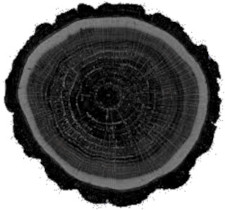Urban form
Blackwood is an amorphous suburban blob, slopping across the hilltop.

It has no real form, no shape, few boundaries or edges to nurture and shelter people. It’s mostly road and parking lots, rather than a human habitat.
A strong urban form is a critical first step in creating a new place.
At this scale we are visualising ‘macro-forms’ – the shape of Blackwood, in the landscape, as a composition of large scale elements. There will be more on this in future posts.
Historical Towns
In the post on Fantasy Towns we discussed how fantasy towns reflect archetypal forms of human settlement across different geographies and cultures. These towns all had a strong urban form with a distinct boundary.
There are many historical examples of this form that are known and loved. Some have changed a lot over time, some very little.

These archetypal historical towns all have a centre with civic and religious buildings, located on higher ground wherever possible.
Some towns dismantle their walls in part or full to enable expansion, while others retain them for defensive reasons or lack of economic growth. In larger settlements a ring road can form around the base of the wall, and might be formalised in a route around the centre in later years.
These towns all have an organic form, both in their macro scale relationship to landscape and topography, (rising from hilltops), and the way local materials used consistently across the urban fabric create a more homogenous macro-form (layerings of stone or brick).
At a finer level these towns display individuality in buildings and streets, just as the natural world continues to have more detail as you scale down from tree to leaf.
Towns can be located in all sorts of topography that has an advantage - whether defensive or economic or both. While Blackwood is on a hilltop crossroads, other towns may take advantage of a river or seaside, or a higher defendable position.

Children absorb and understand these archetypal urban forms and express them in play. This sandcastle by Lily and Edward has the typical features of compact urban form and a clear boundary!
Just like Mont St Michel above.
Examples
Here are some examples of historical human places that have strong archetypal urban forms.
San Gimignano
Italy

I was lucky enough to visit San Gimignano as a kid and was entranced by its winding streets and stony enclosing form, that would open out internally to reveal a tower. From a distance the houses form a perfect organic mass of stone, with the towers reaching up above them representing our human hopes and aspirations.
Gardanne by Cezanne 1885
France
Cezanne's painting in the south of France, in a landscape not unlike the Adelaide Hills in climate and topography, captured the landcape's light and textures perfectly. This hilltop town grows up out of the rural landscape, like a rocky outcrop. The rise to the church centre is emphasised with Cezanne's brushwork.


Jaisalmer
India
Built of glowing sandstone on a sandstone outcrop, the Jaisalmer Fort looks over the town below. Containing a royal palace and Jain Temples, it's a beautiful organic, inhabited, maco-form.
Ragusa
Italy
This landscape is so very like Blackwood's but steeper and more Italian! I love the terraced road that defines the edge of the town so clearly, with houses rising up in wriggling rows to the civic and religious centre.


Carcassonne
France
The perfect medieval walled hilltop town. The defenses of Carcasonne are still intact with a central Donjon and outer walls, sheltering and defending the township. This location has been a strategic defensive hilltop between the Mediterranean and Atlantic since Neolithic times.
Chester
United Kingdom
Riverside Chester has enclosing walls dating back to Roman occupation in 100 CE and remaining in a 3km loop around the old town.
In this old postcard, the walls can be seen keeping out the factories and smoke stacks of the industrial revolution!


Jerusalem
Israel / Palestine
An ancient town, this drawing of Jerusalem is of King Solomon's era 957 BCE. The first temple sits at the top of the hill with the fortified town between two valleys. The Kidron wadi below is used for agriculture in a dry landscape.
Sijilmasa
Morrocco
This Morroccan City on the edge of the Sahara thrived for 600 years from 757 CE. A significant African city, it grew wealthy on the trans-Saharan gold trade and was considered a spiritual centre for Islam.


Alquezar
Spain
Hilltop village, terraced roads, tumbling stone walls. This village was a fort and church built on a limestone outcrop.
Conclusion
These archetypal villages and cities speak to us as beautiful human places. While different and individual, they have some common formal elements: a compact, dense built form within a clear boundary, road or wall, and an organic shape and texture, which rising from the topography, creates macro-forms in the landscape.
We know Blackwood’s general form is derived from its hilltop location at the junction of two ridge lines: but it has none of these formal features that help define it as a human place.
Can the hilltop town archetype be useful as a macro-form for Blackwood?
Would Blackwood benefit from a more compact, dense urban form, within a clear boundary, and emphasising the hilltop topography?




